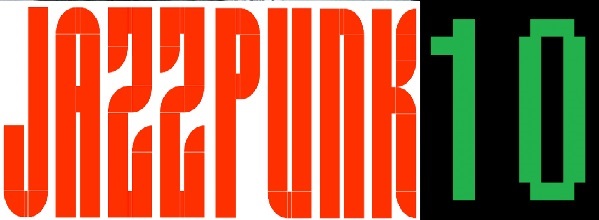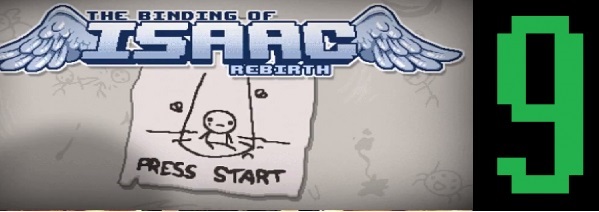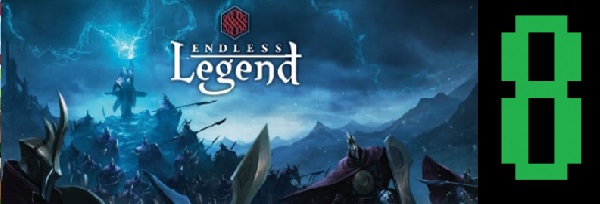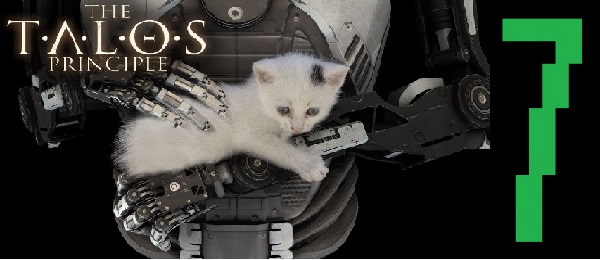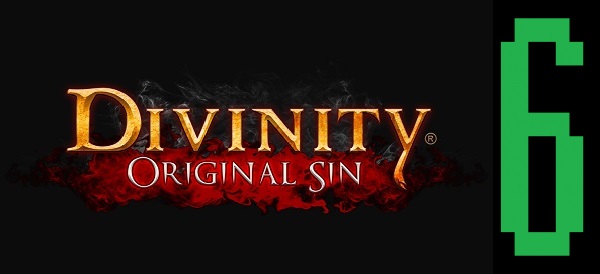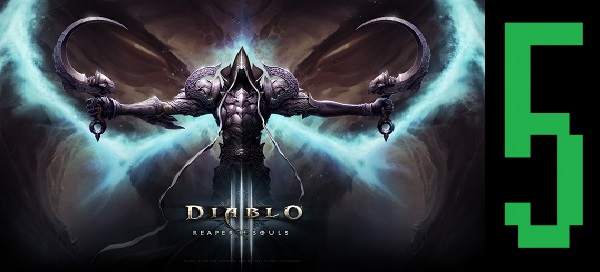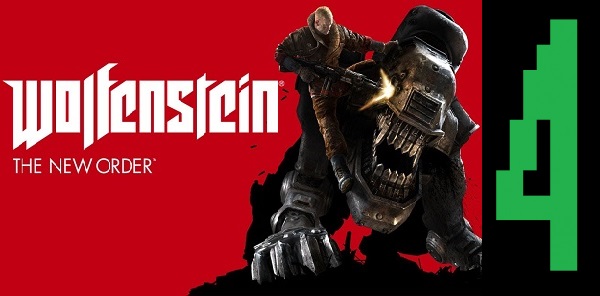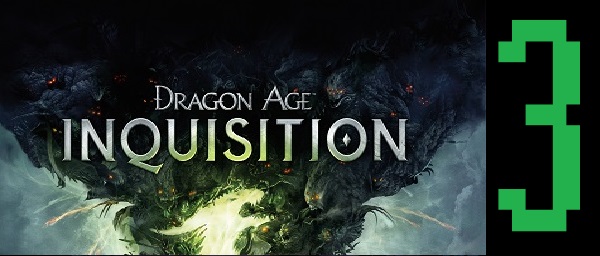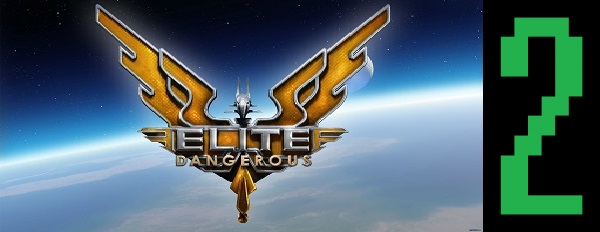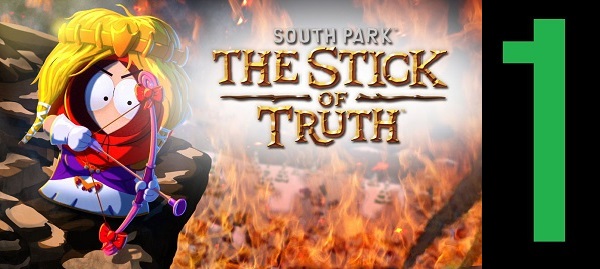Earlier this week we did our general retrospective of 2014 in gaming, and to finish off we’re now going to look specifically at the games themselves.
Many have lamented 2014 as a bad year for games. Personally, I’d call it an interesting one. If you’re focussed on AAA then sure, this year was a bit of a fizzer in many respects. We had a lot of incremental sequels, and an awful lot of broken games. More pointedly, the year’s big franchise launches – the games that were meant to ‘kick off’ the new generation – were all disappointments: Watch Dogs failed to deliver graphically and mechanically, Titanfall, while being arguably the strongest game of the three, was let down by a lack of content, and Destiny came out a confusing mish-mash of mechanics that was pointless to everyone that didn’t have lots of spare time and a supply of similarly-blessed friends with whom to burn it.
But to write off the whole year mainly based on some high-profile duds doesn’t tell the whole story, with more than enough great games to make up for some rickety flagships. In many ways, 2014 was the Year of the Dark Horse, with a wealth of superb games emerging from under the radar and surprising everyone, especially those most ready to write them off. Elite: Dangerous went from the ‘also’ ran of the Space Sim resurgence to one of the year’s most engrossing releases, beating No Man’s Sky to the punch by a year, and possibly Star Citizen by several depending on how long that game takes to finish. It was also a great year for RPGs, with Dragon Age: Inquisition doing much to mend Bioware’s increasingly shaky reputation, Wasteland 2 proving that old-school isometric RPGs still have a place and Divinity: Original Sin striking gold with a hugely enjoyable mixture of new and old. South Park: The Stick of Truth, Middle-earth: Shadow of Mordor and Alien Isolation redeemed their respective franchises, proving that great games can be mined from licenses in the right hands. Even the Wii U stepped up its game, with Smash Bros, Bayonetta 2 and Mario Kart 8 bringing the kind of critical and commercial success Nintendo’s beleaguered console has seen very little of so far.
So, list time. Just to clarify, although there have been some great re-releases/remasters this year (The Last of Us: Remastered, Metro Redux and the new-gen GTA V particularly), I’ve opted to leave them out of the running simply because they are primarily prettied-up versions of games from recent history. While some add some new features – GTA‘s first-person mode for example, or the work done to remove loading screens from Metro – decisions had to be made as to how much needs to be added to a game for it to qualify as a standalone experience. What does make the list are Diablo 3: Reaper of Souls and Binding of Isaac: Rebirth, which both provided sizeable enough expansions to their base games to be worth considering as fully-fledged 2014 releases.
Right from its opening moments, which sees player character Polyblank clatter onto an airport baggage carousel encased in a guitar case-style… Er, man case then a fevered, Saul bass-inspired credit sequence, Jazzpunk makes clear its intentions to be absolutely mental at all times. It lives up to that ambition with aplomb.
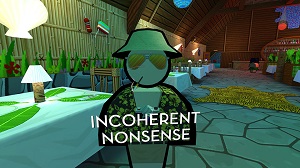 While at base it’s a short and fairly rudimentary item-based adventure game (expect fetching: lots of fetching), it’s really just a framework on which to hang a 60s espionage-inspired world of tireless energy and invention. If you can imagine Zucker-Abrahams-Zucker and Graham Linehan collaborating on a Man from U.N.C.L.E. themed mod for The Stanley Parable, that’ll put you in the right ballpark. Where the game’s value truly lies, however, is in the constant little left-field touches that make the world even crazier than it already seemed. Just in the first ten minutes you can expect to encounter exploding hoboes, heckling postboxes and pizza zombies, and that’s just the beginning of a relentless stream of gags, some presenting themselves easily and some hidden throughout the colourful, cyber-kitsch levels.
While at base it’s a short and fairly rudimentary item-based adventure game (expect fetching: lots of fetching), it’s really just a framework on which to hang a 60s espionage-inspired world of tireless energy and invention. If you can imagine Zucker-Abrahams-Zucker and Graham Linehan collaborating on a Man from U.N.C.L.E. themed mod for The Stanley Parable, that’ll put you in the right ballpark. Where the game’s value truly lies, however, is in the constant little left-field touches that make the world even crazier than it already seemed. Just in the first ten minutes you can expect to encounter exploding hoboes, heckling postboxes and pizza zombies, and that’s just the beginning of a relentless stream of gags, some presenting themselves easily and some hidden throughout the colourful, cyber-kitsch levels.
Naturally, that means it’s not a game for everyone. It requires a love of anarchic non-sequitur-based humour as well as a willingness to accept a game that puts exploration over mechanics. But if these things float your boat, you’ll find Jazzpunk a pure joy. I mean, it’s hard to not love a game that lets you play a nuptial-themed Quake clone called Wedding Qake.
Edmund McMillan and Florian Himsel’s The Binding of Isaac was already one of the most compelling roguelike arcade games on the market, but Nicalis’s superlative expansion has practically forged from it a new game, one with even more devious powers of addiction. A new, SNES-esque (try repeating that really fast while drunk) artstyle is just the tip of the iceberg with new room designs, new playable characters, enemies, bosses and items providing tens of hours of new discoveries even for fans of the original. Also, thanks to the game being released from the shackles of Flash, the game now allows mid-game saving – a huge improvement considering how long games can last in the hands of experienced players.
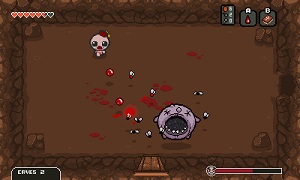 Of course, the artstyle and subject matter are still very much a ‘mileage may vary’ situation, with its religious and scatological themes still at the core of the game. However, if you can roll with McMillan’s disturbingly humorous vision you’ll still find a surprisingly deep experience. Many roguelikes will simply make do with killing you and making you go back to the beginning: In Isaac, restarting is an educational process as you slowly learn what its hundreds of items and powerups do, and how you can take advantage of them to create powerful builds that can send you from near-death to a health-laden powerhouse in a matter of minutes: or vice versa, if fortune isn’t on your side.
Of course, the artstyle and subject matter are still very much a ‘mileage may vary’ situation, with its religious and scatological themes still at the core of the game. However, if you can roll with McMillan’s disturbingly humorous vision you’ll still find a surprisingly deep experience. Many roguelikes will simply make do with killing you and making you go back to the beginning: In Isaac, restarting is an educational process as you slowly learn what its hundreds of items and powerups do, and how you can take advantage of them to create powerful builds that can send you from near-death to a health-laden powerhouse in a matter of minutes: or vice versa, if fortune isn’t on your side.
But rather than make luck the only variable, there’s an amazing flexibility to Isaac’s items, with the unlockable characters introducing entirely new playstyles with their own optimal build options. It may look like a homebrew shooter from a guy with religious hang-ups and a poop fixation, but The Binding of Isaac was always a much smarter game than its provocative shell suggested. Rebirth elevates it to a classic.
The first of two entries that released in December, barely squeezing themselves into eligibility, but became instant highlights. Amplitude Studios previously attempted to break into the 4X strategy genre with 2012’s Endless Space, a solid effort that ultimately failed to distinguish itself from the many games that have tried to outdo the king of the genre, Civilization. This time, Amplitude chose to play with convention, making Endless Legend a true breath of fresh air that provides new ways to play the 4X game.
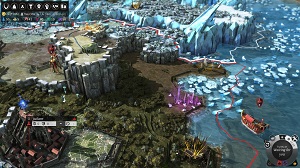 Most 4X games have followed the traditional structure set in stone since the original Civ: Pick a faction (they have minor differences but are generally much of a muchness), build cities, build more cities, grab land and no matter what type of victory you’re aiming for, be prepared to go to war a lot. Endless Legend asks the player to adopt a much less frantic philosophy: first, the playable races are hugely diverse, requiring massively different strategies. You might pick the Vaulters, a technological race that recently emerged from an underground bunker who can harness the power of teleportation; the Roving Clans, a trade-focussed faction who cannot declare wars but are able to relocate their cities on the backs of giant beetles; or if you fancy a spot of old-fashioned domination by force, the plague-obsessed Necrophages will suit your needs perfectly.
Most 4X games have followed the traditional structure set in stone since the original Civ: Pick a faction (they have minor differences but are generally much of a muchness), build cities, build more cities, grab land and no matter what type of victory you’re aiming for, be prepared to go to war a lot. Endless Legend asks the player to adopt a much less frantic philosophy: first, the playable races are hugely diverse, requiring massively different strategies. You might pick the Vaulters, a technological race that recently emerged from an underground bunker who can harness the power of teleportation; the Roving Clans, a trade-focussed faction who cannot declare wars but are able to relocate their cities on the backs of giant beetles; or if you fancy a spot of old-fashioned domination by force, the plague-obsessed Necrophages will suit your needs perfectly.
Empire building adopts a similar philosophy of stripping down then widening. Instead of pumping out cities willy-nilly, Endless Legend has you establish regions for your faction each governed by one city that you grow and develop in a modular fashion. Similarly, it has you sustain considerably fewer armies than in most 4X games, with the ones you have upgraded with better weapons, equipment and heroes with their own craftable gear. Assimilate some of the local races and you can add them to your roster of buildable units, even incorporating their look into customizable armour sets for your entire army. Instead of generating cities and units in a mad rush to swamp the map, here you get to nurture them in manageable enough numbers that you start to invest in them emotionally. You build them piece by piece, you watch them grow, and losing them hurts on an individual basis in a way that 4X games have traditionally told us we should feel, but never do.
Endless Legend does 4x differently. While it makes it harder work to adjust to in the early stages, the act of unlearning the rules becomes a galvanizing experience that strategy games nowadays rarely achieve.
In a year flush with unlikely surprises, one of the strangest may be that we would get the best first-person puzzle game since the Portals, and it would come from the people who gave us Serious Sam.
The other December release to squeak onto the list, The Talos Principle was released by Croteam with zero hype and practically on the eve of the Steam Winter Sale to boot – possibly the worst time of the year to release a $40 PC game. Thankfully, critics and gamers seemed to take to its cerebral charms almost immediately, and for good reason: The Talos Principle is a masterpiece of laser-focussed design and surprisingly subtle writing, especially for a developer best known for headless screaming guys with bombs for hands.
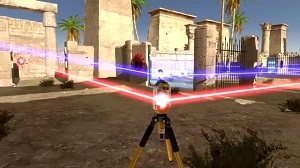 The Talos Principle melds the quirky wit of Portal with surprisingly hard sci-fi. You play as a robot confined in a series of digital environment, and tasked with solving object-based puzzles to collect Tetris-style tetronimoes which are used to unlock new objects and areas. Guided by a beatific voice in the sky calling itself Elohim, all you know is that you may have been the result of some kind of experiment into AI and that there’s a monstrous tower which Elohim strictly forbids you to enter – naturally making it your goal. As you progress you unlock emails, journal entries and other documents that gradually shed light on whatever the hell’s happened.
The Talos Principle melds the quirky wit of Portal with surprisingly hard sci-fi. You play as a robot confined in a series of digital environment, and tasked with solving object-based puzzles to collect Tetris-style tetronimoes which are used to unlock new objects and areas. Guided by a beatific voice in the sky calling itself Elohim, all you know is that you may have been the result of some kind of experiment into AI and that there’s a monstrous tower which Elohim strictly forbids you to enter – naturally making it your goal. As you progress you unlock emails, journal entries and other documents that gradually shed light on whatever the hell’s happened.
The game simply bursts with invention. The puzzles are tight and always fair, its structure makes a point of regularly feeding the player new mechanics and environments, and the writing is consistently strong. Croteam handle philosophy-infused hard sci-fi with aplomb, the writing exploring issues of existence and identity in a way that never jars or feels shoehorned in and the stabs of dry humour always keep to the right side of the tonal line. Throw in some rather gorgeous visuals and a haunting score, and you get not only one of 2014’s strongest games but, one suspects, a sleeper hit for 2015 in the making.
One of the very few crowdfunded games of 2014 to not blow its hype quota early, Divinity: Original Sin was a genuine head-turner on its release in June – and not just for its sumptuous visuals. While in many respects a traditional turn-based isometric RPG, developer Larian infused D:OS (Even the acronym screams old-school PC) with an emergent spirit that makes it something rather unique.
The tone is set by its idiosyncratic approach to the player character: You have two in D:OS, a male/female team whose relationship you ‘direct’ via dialogue options. It’s a fascinating mechanic, creating an altogether different kind of emotional investment than we’re accustomed to have in RPGs. Similarly, party members are supplied in abundance early on, encouraging the player to discover through experimentation a group dynamic with which they want to stick, rather than the normal piecemeal doling out of secondaries that tends to make late-game group dynamics a distraction rather than a boon.
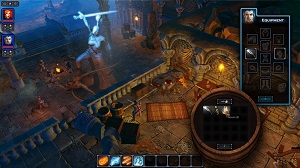 Then you have the world of Rivellon itself, a place designed to facilitate player invention rather than regiment it. The first part of the game, which has you solving a murder mystery in the town of Cyseal, is almost exclusively about exploration and experimentation, and while the turn-based combat is rare and extremely challenging, it too is designed with a sandbox philosophy in mind. By the time fighting occurs more commonly you should be familiar with how positioning and the use of environmental features to hinder your enemy, making for some thrilling encounters.
Then you have the world of Rivellon itself, a place designed to facilitate player invention rather than regiment it. The first part of the game, which has you solving a murder mystery in the town of Cyseal, is almost exclusively about exploration and experimentation, and while the turn-based combat is rare and extremely challenging, it too is designed with a sandbox philosophy in mind. By the time fighting occurs more commonly you should be familiar with how positioning and the use of environmental features to hinder your enemy, making for some thrilling encounters.
Divinity: Original Sin may be a throwback, but it’s one to an age that treated RPGs as machines of opportunity rather than a linear path. By mixing this philosophy with a modern sensibility that eases the player into its systems rather than beat them over the head with them, Larian have come up with one of the most charming and freshest feeling PC RPGs in years, and a must for fans of the genre.
The second expansion to make this list, and like The Binding of Isaac: Rebirth, Diablo 3: Reaper of Souls more than earns the distinction.
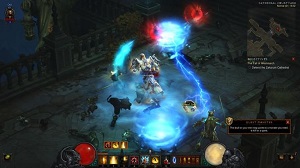 Let’s face it, nobody really loved vanilla Diablo 3. Even its strongest defenders had to admit its dearth of content, and mediocre loot thanks an ill-advised real money auction house that stymied the progress of those unwilling to pay extra. It may have been mechanically strong, that classic Diablo ‘feel’ present in spades, and it may have benefited from its bold, colourful artstyle, but it ultimately only ever felt like half a game.
Let’s face it, nobody really loved vanilla Diablo 3. Even its strongest defenders had to admit its dearth of content, and mediocre loot thanks an ill-advised real money auction house that stymied the progress of those unwilling to pay extra. It may have been mechanically strong, that classic Diablo ‘feel’ present in spades, and it may have benefited from its bold, colourful artstyle, but it ultimately only ever felt like half a game.
Reaper of Souls gave us the other half, and the change was staggering. A fifth act gave the campaign a meatiness that had previously eluded it, a new player character – the Crusader – was added, and the latest in a series of loot overhauls paired with the closing of the real money auction house not only restored loot levels to what people had come to expect from Diablo but also opened up the system’s full potential to all players, without a paywall to worry about.
The main attraction, however, was the introduction of Adventure Mode and the Paragon levelling system, finally giving players the endgame content they wanted. Now players could keep running missions and levelling our characters indefinitely if they wanted, a prospect that not only felt plausible, but great fun to boot. Diablo addiction is a bit like the Matrix: it cannot be described, only experienced, and with Reaper of Souls the hit is the strongest it’s been for a long time. Blizzard get that loot is about tangible progress, improvement that you feel in the very weight of your character, and that that progress should be challenging but also tantalizingly accessible. Sure, the story is like a SyFy adaptation of a shitty 70s panel van painting, but that was never the draw. Diablo has always been about mechanics: pure, unfettered, lovingly oiled mechanics, and Reaper of Souls gives us the machine at its peak performance.
Nobody expected much from Wolfenstein: The New Order. With a franchise that had been in the doldrums since 2001’s Return to Castle Wolfenstein, The New Order‘s underwhelming trailers suggested nothing more than another half-hearted attempt to drag out a long-irrelevant series. I mean, who cares about B.J. Blazcowicz in 2014 – right?
Well as it turns out, we all do. MachineGames, a new developer partly made up of ex-Starbreeze devs, worked wonders with The New Order, creating a slick, eminently playable FPS that takes the alternate-history gimmick on which the game is predicated and running with it. While the WWII-set opening level is solid if unspectacular, the game really begins with B.J. awaking from a coma in the midst of a 1960s in which the Nazis reign unopposed, save for a ragtag resistance in need of a galvanizing figure.
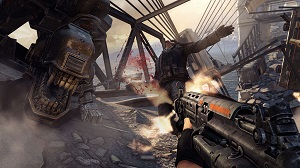 You can guess the rest, and while The New Order‘s story is fairly predictable there’s an earnestness to the writing that actually succeeds in giving the excellent gunplay genuine emotional weight. Some smart character writing not only provides us with genuinely likeable allies, it actually allows B.J. Blazkowicz – B.J. bloody Blazkowicz of all people – to show some depth and emotional range. It even has sex scenes that feel real and tonally appropriate, something that many games of much more literary ambition have struggled to pull off. An early choice even throws up a couple of replay-friendly variations in the cast. One character in particular, one I twigged that he was based on a certain real-life legend from the 60s, honestly gave me some of this year’s strongest geek-vapours. What’s more, with the intimate-feeling Starbreeze style of FPS gameplay all over it the game simply gave some of the best shooting to be had this year, making unleashing one’s own inner Aldo Raine great fun.
You can guess the rest, and while The New Order‘s story is fairly predictable there’s an earnestness to the writing that actually succeeds in giving the excellent gunplay genuine emotional weight. Some smart character writing not only provides us with genuinely likeable allies, it actually allows B.J. Blazkowicz – B.J. bloody Blazkowicz of all people – to show some depth and emotional range. It even has sex scenes that feel real and tonally appropriate, something that many games of much more literary ambition have struggled to pull off. An early choice even throws up a couple of replay-friendly variations in the cast. One character in particular, one I twigged that he was based on a certain real-life legend from the 60s, honestly gave me some of this year’s strongest geek-vapours. What’s more, with the intimate-feeling Starbreeze style of FPS gameplay all over it the game simply gave some of the best shooting to be had this year, making unleashing one’s own inner Aldo Raine great fun.
Wolfenstein: The New Order may have fooled us into expecting one of 2014’s most depressingly cynical retreads, but instead proved itself to be one of the leading lights in a year where the industry seemed to remember that long-running franchises can still yield good games.
It’s been a rough few years for Bioware. Mass Effect 3’s ending generated heated controversy, Dragon Age 2 was generally rejected wholesale by fans, and their purchase by EA followed up by the disastrous launch of Star Wars: The Old Republic left many fans left wondering whether the Edmonton developer had lost the magic that helped them create such classics as Baldur’s Gate and Knights of the Old Republic.
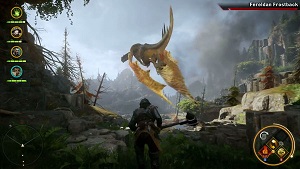 Thankfully, Dragon Age Inquisition rehabilitates the stalled Dragon Age franchise, and to a large extent Bioware’s own reputation. It sees them rejecting the more constrained, linear structure followed in Dragon Age 2 and in some respects Mass Effect 3 and re-embrace the concept of epic scale with a nod to the open-world template of the Elder Scrolls series. The early Hinterlands area alone fair teems with quests and sidequests enough to keep players going for dozens of hours if they so choose. While the combat retains much of the action-oriented style notorious from DA2, Bioware also re-introduce the ability to pause the action and queue up individual actions, very much like DA: Origins’s turn-based system.
Thankfully, Dragon Age Inquisition rehabilitates the stalled Dragon Age franchise, and to a large extent Bioware’s own reputation. It sees them rejecting the more constrained, linear structure followed in Dragon Age 2 and in some respects Mass Effect 3 and re-embrace the concept of epic scale with a nod to the open-world template of the Elder Scrolls series. The early Hinterlands area alone fair teems with quests and sidequests enough to keep players going for dozens of hours if they so choose. While the combat retains much of the action-oriented style notorious from DA2, Bioware also re-introduce the ability to pause the action and queue up individual actions, very much like DA: Origins’s turn-based system.
Principally, however, it’s the world that provides Inquisition’s biggest draw. While the Dragon Age universe draws heavily on modern-day Bioware tropes (Here’s the powerful, secretive sect who act as an independent police force yet who nobody really trusts! Here’s the monolithic, mysterious force of looming destruction only you hold the key to opposing! Here’s the nomadic race crippled by uncertainty! Nobody gets along!) Inquisition does enough to shake up the status quo to inject a sense of genuine drama into proceedings, making your character’s quest to rally the forces of Thedas into some semblance of co-operation consistently enjoyable – especially if you choose to be a prick about the whole thing.
While Inquisition isn’t perfect it’s still Bioware’s deepest and most enjoyable outing since Mass Effect 2, a shining light in a year bereft of good AAA RPGs and a promising sign that Bioware have rediscovered the qualities that made them great.
While the resurgence of the space sim is a wondrous thing, it’s also been a huge tease with two of its flagship releases – No Man’s Sky and Star Citizen – yet to be released, the former still existing as a series of impressive but hardly specific trailers, and the latter a fairly shallow dogfighting/racing demo with the real thing still more than a year away. It’s fitting then for the year of the dark horse, that Frontier Developments’ Elite Dangerous, up until recently by far the least-hyped of the big three, would beat both of them to the punch, revealing itself as an intoxicating mixture of old-school design and modern polish.
Elite isn’t a game about being force-fed objectives, or even about any particular kind of endgame. Aside from getting rich, getting better, upgraded ships and raising your rank there’s no real goal to speak of, other than what you make of it. For some, it’s about getting rich; for others it’s about gaining rep with one of the major in-world factions, or exploring the galaxy; many people simply aim to make their way back to Earth, no small task considering that the game models the entire Milky Way built largely on authentic NASA data. It’s about building a reality for you to inhabit, and as long as you’re prepared to do so Elite provides one of the most convincing senses of atmosphere ever to grace the Space Sim genre.
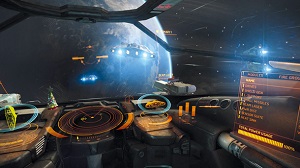 A lot of it is in the gorgeous graphics, and the superb Ben Burtt-esque sound design: the way your ships thrum and strain like you can imagine actual working (and sometimes not particularly well working) machines would in space, the PA chatter in the space stations, the omnipresent rumble in supercruise that reminds you that you’re travelling at speeds that are basically shredding the laws of physics. It’s also in the way the game controls, accessible but just complex enough to give the feel of operating a real machine; the way that the mechanics of inter-system travel demands just enough vigilance in your orientation and speed management that you remain engaged at all times. Besides, that spectacular warp effect never gets old.
A lot of it is in the gorgeous graphics, and the superb Ben Burtt-esque sound design: the way your ships thrum and strain like you can imagine actual working (and sometimes not particularly well working) machines would in space, the PA chatter in the space stations, the omnipresent rumble in supercruise that reminds you that you’re travelling at speeds that are basically shredding the laws of physics. It’s also in the way the game controls, accessible but just complex enough to give the feel of operating a real machine; the way that the mechanics of inter-system travel demands just enough vigilance in your orientation and speed management that you remain engaged at all times. Besides, that spectacular warp effect never gets old.
Frankly, even in its various beta forms Elite Dangerous gave me some of my greatest and most inspirational moments in gaming this year, and I still haven’t scratched the surface of it. It’s a shame that Frontier slipped up so badly by leaving the announcement of the abandonment of Offline Mode so late, as it’s overshadowed the release of a game that should be played by all space sim fans, and space nuts in general. It’s also worth mentioning that besides the Offline Mode controversy, Elite Dangerous also happens to be the few online-dependent games to release this year with no major failures, and the emergent worldbuilding they’re attempting has a ton of potential for keeping the community invested.
As has become standard for crowdfunded games, Elite is still being worked on and it’d be nice to see it enhanced with more diverse activities (Planetary landings have been promised for an expansion coming sometime this year). In the meantime, however, Elite Dangerous is less an exercise in nostalgia than an exploration of how a classic game can be re-envisioned in the modern day, and a complete joy for those who are willing to soak in the atmosphere and learn how to make their way in the galaxy.
When compiling these end-of-year lists, the games that make the cut tend to be a combination of the objective best in their respective fields in terms of artistry and mechanics – usually the games that were reviewed best, the ‘shoe-ins’ that most people generally agree on – and the games that had the strongest effect on you personally, whether in terms of fun, emotional involvement, or that nebulous overall experience that isn’t always quantifiable but provides us the moments that in our memories define the year. For some games the effect doesn’t last and its faults outweigh the initial buzz, or you eventually realize that your reaction to a game is more to do with personal inclinations rather being directly caused by the game itself. The ones that stick in the memory, however, tend to be the ones that drive my list, and no game this year gave me as much joy and as many memorable moments as South Park: The Stick of Truth.
 South Park has had a downright horrible history in games, and after Stick plummeted into development hell after the collapse of THQ, only to be picked up by Ubisoft of all publishers, it was hard not to expect another trainwreck. Even the involvement of Obsidian and South Park creators Trey Parker and Matt Stone wasn’t enough to instil total confidence, and a big part of what made Stick such a joyful experience was the relief that finally, finally, someone had nailed South Park in a game.
South Park has had a downright horrible history in games, and after Stick plummeted into development hell after the collapse of THQ, only to be picked up by Ubisoft of all publishers, it was hard not to expect another trainwreck. Even the involvement of Obsidian and South Park creators Trey Parker and Matt Stone wasn’t enough to instil total confidence, and a big part of what made Stick such a joyful experience was the relief that finally, finally, someone had nailed South Park in a game.
But it was so much more than that. A rough follow-up to 2013’s Black Friday three-parter, Stick had us play a new kid in town who gets involved with Cartman, Stan, Kyle and Kenny’s LOTR/Game of Thrones-baiting fantasy dress-ups. Being South Park, matters soon escalate to involve aliens, government conspiracies, Nazi zombies and, inevitably, Mr. Slave’s rectum, and the game’s biggest joy is how it essentially comprises of a fifteen-hour greatest hits episode. You get Timmy. You get Al Gore. You get Chef. You, in the game’s two high points, get the Underpants Gnomes and Canada. Parker and Stone leave few stones unturned, mining the history’s show deep in a way that’s arguably gimmicky, but undeniably exciting. Being lifelong gamers, Parker and Stone also can’t resist parodying well-worn videogame conventions to wonderful effect (Make sure you find all the audio logs).
The best part of the game may be the writing, but its success is largely helped by Obsidian’s extremely solid, Paper Mario-esque mechanics, with combat that is simple but surprisingly deep with a fair bit of tactical flexibility and the various classes (My own personal favourite: Jew) armed with a variety of funny and genuinely inspired abilities. Even the overworld map succeeds in looking exactly like the show while still holding a ton of little secrets and alternative routes. It may sound like hyperbole when I say that the games feels exactly like playing a real episode of the show but in this case it’s absolutely true, and Obsidian work wonders to make South Park‘s seemingly limited 2D aesthetic work as an RPG space.
Maybe as a long-time fan of the show I’m biased, but no other game this year made me laugh, smile and savour every moment than Stick, and it kept me engaged fir every one of its fifteen hours. That in itself is testament to the sheer amount of material in the game, a true achievement even in a year where several underachieving franchises rediscovered their mojo. South Park: The Stick of Truth isn’t just one of the most consistently funny games out there, but also one of the greatest licensed games of all time and for this writer, easily the cream of the crop for 2014.
Honourable mentions: Middle-earth: Shadow of Mordor, Alien Isolation, Oddworld: New n’ Tasty, Hearthstone, A Bird Story, Dark Souls 2, Plants vs Zombies: Garden Warfare.
THE CHUD.COM COMMUNITY’S GAMES OF THE YEAR
1) Dragon Age: Inquisition
2) South Park: The Stick of Truth
3) The Walking Dead: Season 2
4) The Wolf Among Us
5) Titanfall
The Spirit of CHUD Award: Depth
